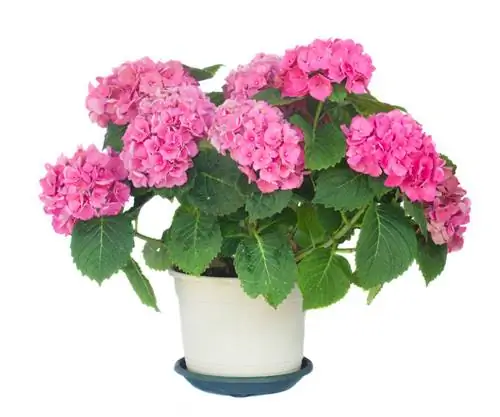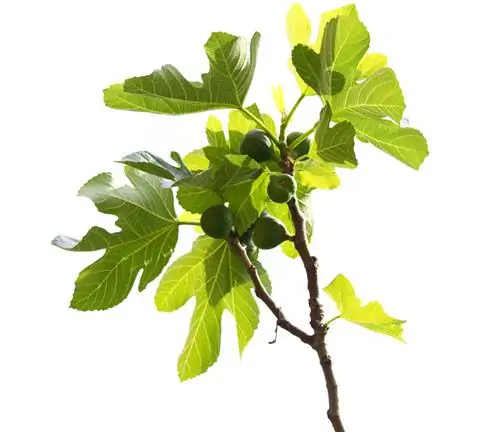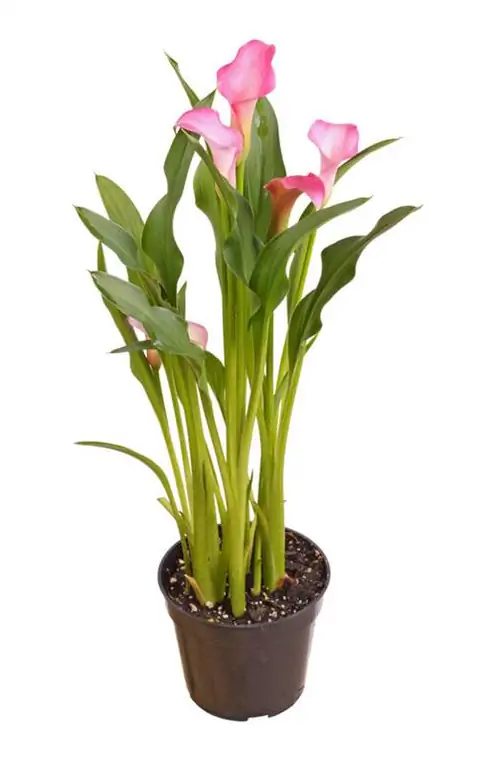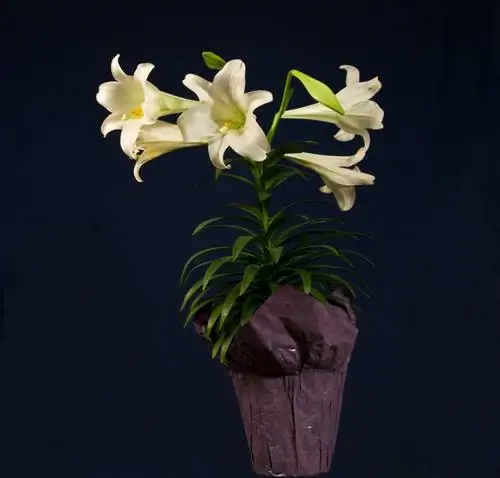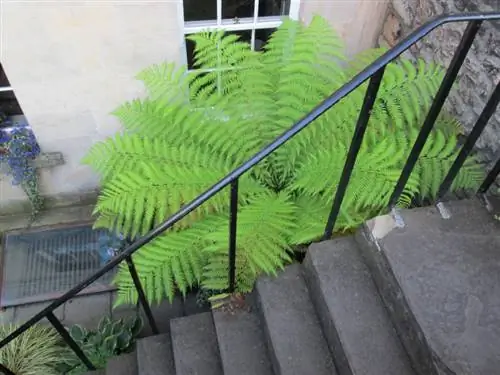- Author admin [email protected].
- Public 2023-12-16 16:46.
- Last modified 2025-01-23 11:20.
The hydrangea copes well with the temperatures in the apartment and is therefore extremely popular as a richly flowering pot plant. In this guide we would like to inform you about the special requirements the hydrangea has.

How to care for a hydrangea as a houseplant?
To care for a hydrangea as a houseplant, it should be in a bright, but not directly sunny location, at room temperatures of 20-23 degrees. Water them regularly with soft water and use rhododendron or azalea soil and special fertilizer.
Location
Give the hydrangea a bright place at the flower festival. However, direct sunlight, especially during the hot midday hours, should be avoided.
Room temperature
Hydrangeas cope well with usual room temperatures between 20 and 23 degrees. However, the beautiful flower umbels wither more quickly when temperatures are consistently warm indoors.
Pouring
The hydrangea needs a relatively large amount of water even in the apartment. Always keep the substrate well moist, but avoid waterlogging. Pour away excess liquid from the planter or saucer after a few minutes so that the roots do not get wet and start to rot. In regions with very hard water, you should water the houseplant with rainwater or filtered water, as too much lime is poorly tolerated in the long term and leads to yellow, chlorotic leaves.
Blue hydrangeas require acidic soil
For blue hydrangeas, it is advisable to occasionally treat the watering water with vinegar. The pH value of the substrate should settle slightly below seven. Check this soil value with test strips at regular intervals.
Substrate
Hydrangeas do poorly in normal potting soil. Therefore, place the hydrangea in rhododendron or azalea soil, which has the optimal pH value and stores water for a long time without becoming waterlogged. Repotting takes place approximately every two years.
Fertilization
Hytensias that are grown indoors, like hydrangeas transplanted outdoors, need a special fertilizer. Hydrangea, azalea or rhododendron fertilizer is well suited and added to the irrigation water once a week during the growth phase.
Blue flowering hydrangeas
These varieties need to be supplied with blue fertilizer once or twice a year. Alternatively, you can dissolve about six grams of aluminum sulfate, which you can get from the pharmacy, in the irrigation water once in the spring.
Special features regarding care
- Break out dead flowers regularly so that the plant produces new flowers.
- After flowering, you can transplant the hydrangea outdoors.
- Alternatively, you can overwinter the hydrangea in a cool, frost-free room.
Tips & Tricks
Since the entire apartment is often heated, you can move the indoor hydrangea to a cool place overnight, such as the stairwell or bedroom. This measure means the flowers last longer.

